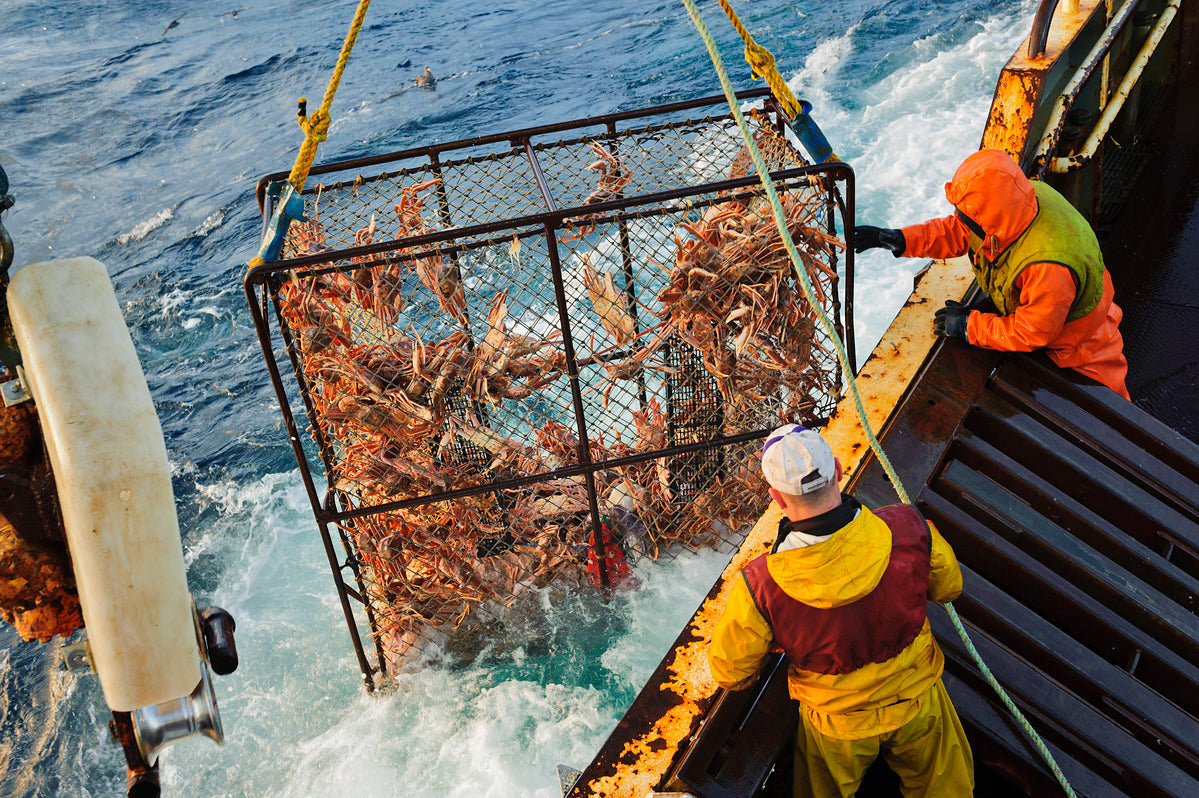October is National Seafood Month, a time to celebrate the incredible benefits of seafood and the hardworking fishing families who bring it to our tables. For Premier Catch, it is more than a month on the calendar. It is a chance to share why wild seafood from Alaska and the Pacific Northwest is the healthiest, most sustainable choice you can make.
The History of National Seafood Month
National Seafood Month was officially designated by Congress in 1989 to highlight the importance of seafood in the American diet. The goal was simple: encourage more Americans to eat seafood for better health while recognizing the vital role that fisheries play in our economy and coastal communities.
Today, the message is just as important. The U.S. has some of the best-managed fisheries in the world, yet 80 to 90 percent of the seafood eaten in America is still imported. By choosing wild-caught seafood from Alaska and the Pacific Northwest, you are supporting local fishing families, protecting U.S. jobs, and fueling your body with clean, natural protein.
Why Seafood Matters for Your Health
Seafood is one of the healthiest proteins you can put on your plate. According to the USDA dietary guidelines, Americans should eat at least two servings of seafood per week. Yet fewer than 1 in 10 Americans meets that recommendation.
Wild-caught seafood like salmon, cod, sablefish, and halibut is packed with:
-
Omega-3 fatty acids for heart and brain health
-
Lean, complete protein to support strength and recovery
-
Essential vitamins and minerals like B12, D, selenium, and iodine
-
Nutrients that support longevity, healthy aging, and immune function
Seafood is also naturally low in calories and saturated fat, making it the perfect choice for anyone managing weight, blood sugar, or overall wellness.
Why Wild Alaska and Pacific Northwest Seafood Stands Apart
Not all seafood is created equal. Farmed fish and imported seafood often lack the traceability and sustainability practices that U.S. fisheries demand. Wild Alaska seafood is harvested under some of the strictest regulations in the world to ensure long-term health of the oceans. Pacific Northwest fisheries also operate with a strong focus on sustainability, community, and environmental responsibility.
At Premier Catch, every fillet and crab leg we ship is:
-
Sustainably harvested by American fishing families
-
Frozen at peak freshness, often right at sea
-
100 percent traceable back to the source
-
Delivered to your doorstep with zero additives or preservatives
How Premier Catch Celebrates National Seafood Month
As a women-owned, family-run company with generational roots in the seafood industry, Premier Catch was built on a passion for sharing the highest-quality seafood with families across the country. We honor National Seafood Month by:
-
Offering wild seafood from Alaska and the Pacific Northwest, shipped nationwide
-
Creating chef-tested recipes that make seafood easy for busy families
-
Sharing nutrition insights from our co-founder, Ashley, a registered dietitian
-
Educating customers about the importance of sustainability and traceability
Celebrate with Us
This October, join us in celebrating National Seafood Month by making seafood the star of your meals. From wild Alaska salmon to flaky Pacific cod, from buttery sablefish to sweet Dungeness crab, there is something for everyone at Premier Catch.
Shop our wild, sustainable seafood today and taste the difference that supporting American fishing families makes.
image credit: Alaska Seafood Marketing Institute


